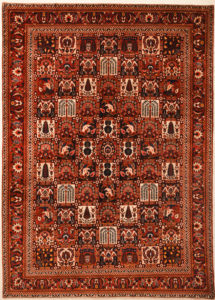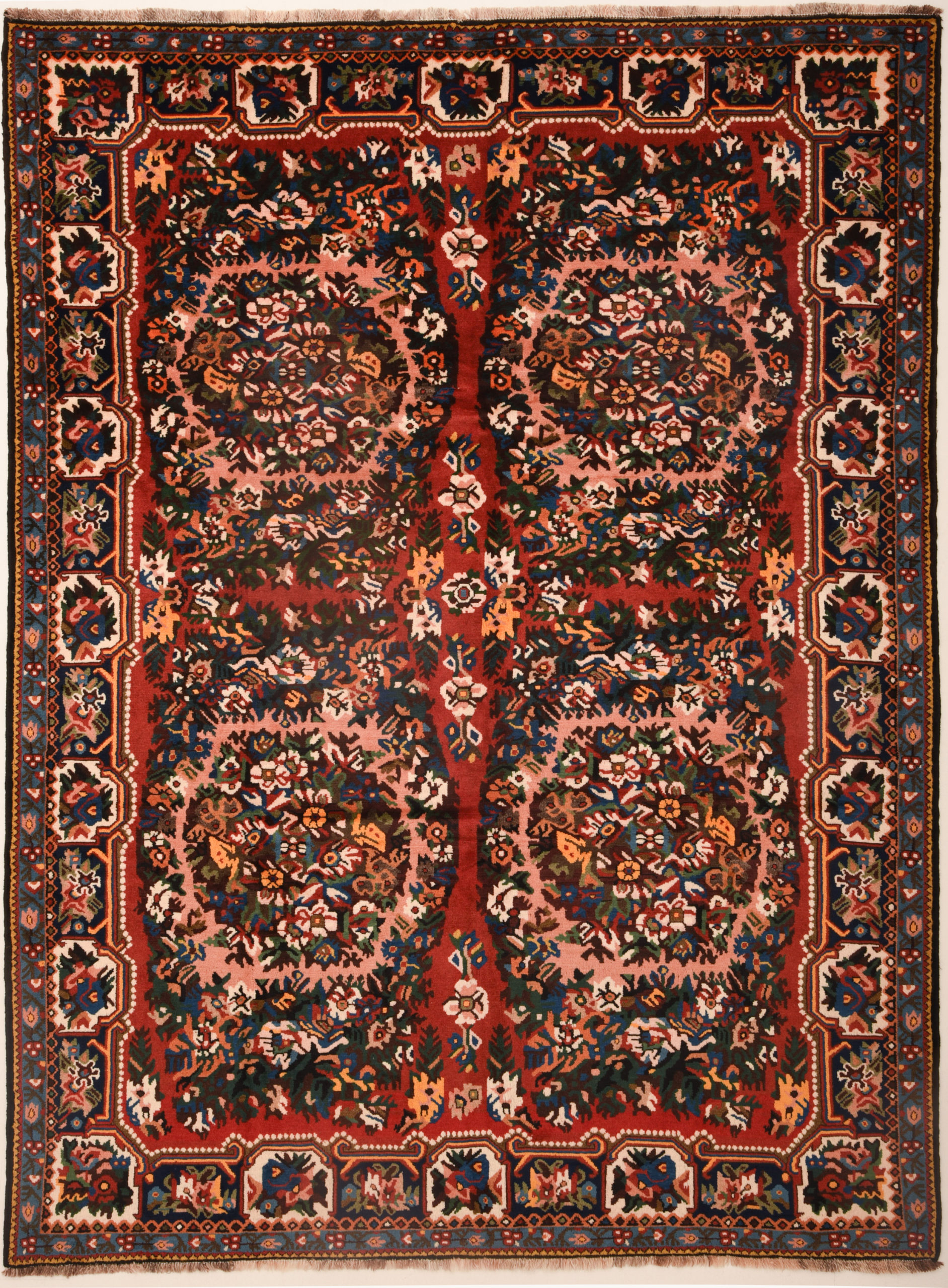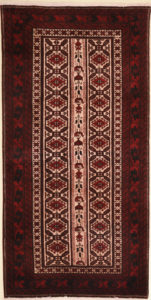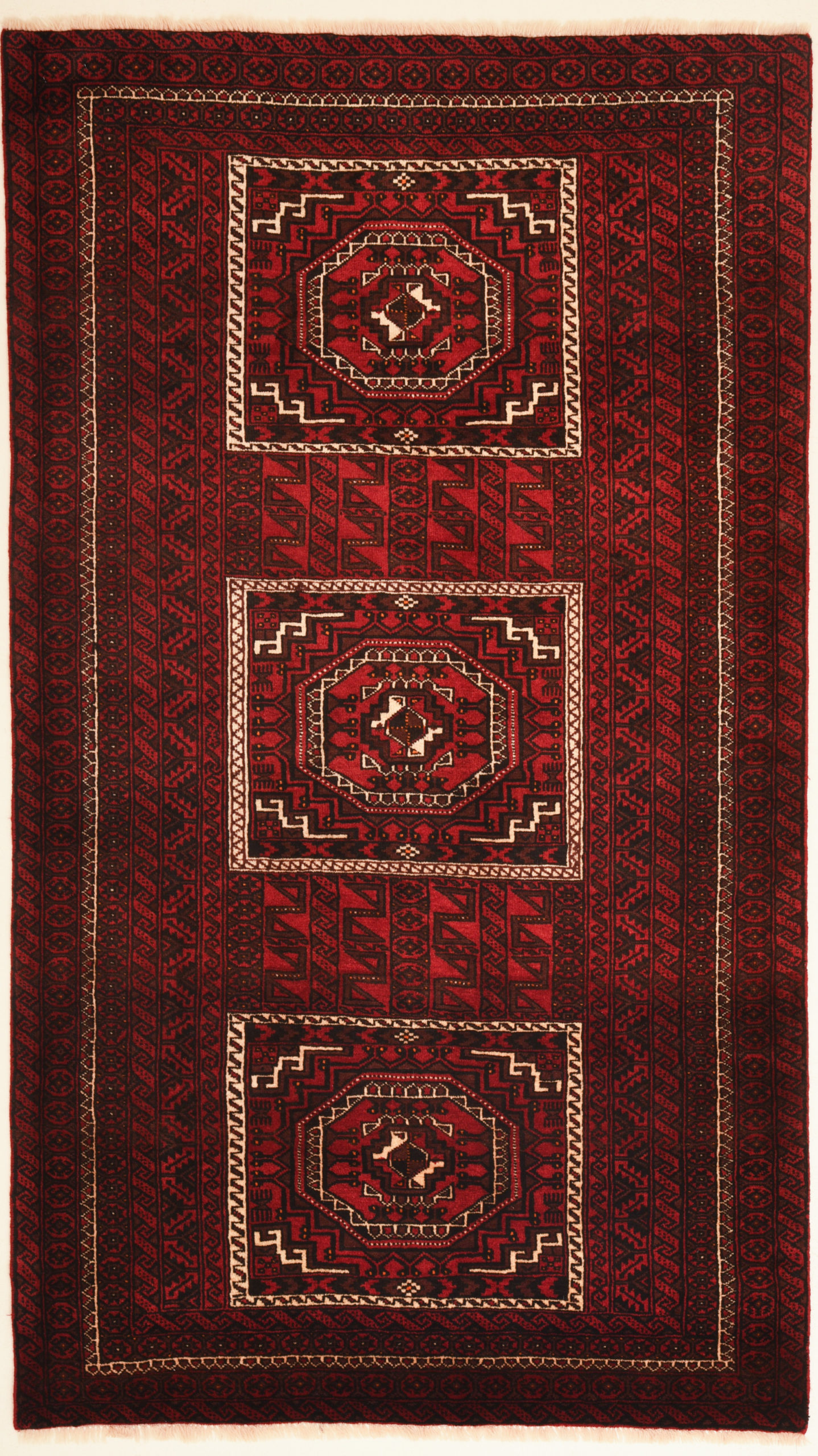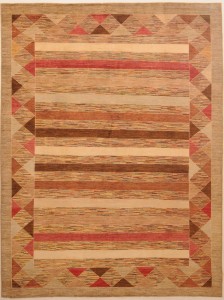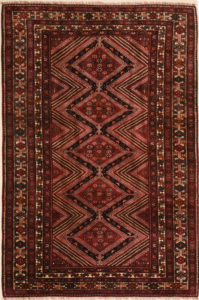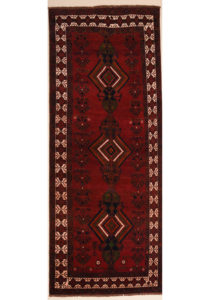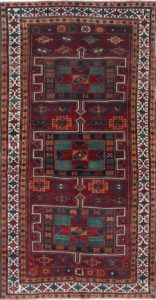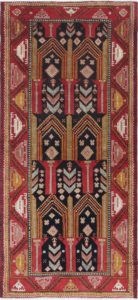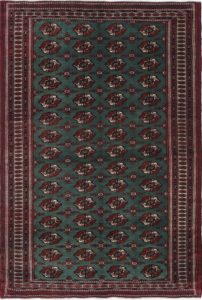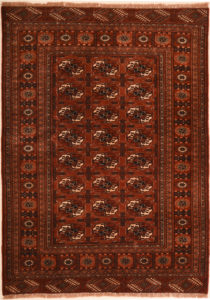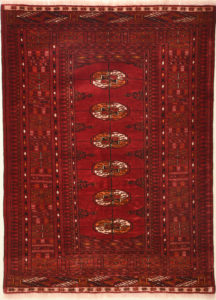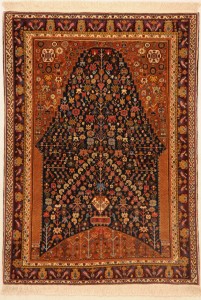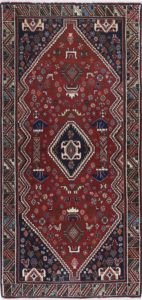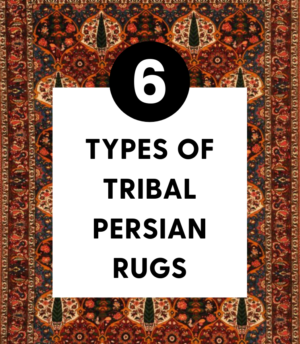Tribal rugs are produced by nomadic tribes that were always on the move in search for better pastures for their sheep. The nomadic lifestyle of the weavers has a major impact on the shape, colors, and designs of these rugs.
Tribal weavers used their surroundings as inspiration for their designs. All dyes used were also obtained from natural vegetation available in their surrounding area. This resulted in a fascinating array of patterns and colors in tribal rugs produced in different areas.
7 Types of Tribal Persian Rugs Video
Bakhtiari
Bakhtiari rugs are the most colorful of all Persian rugs. Weavers created very busy patterns using a wide palette of bright colors including bright reds, browns, greens, and yellows accented with white and ivory.
Latticed compartments and squares elaborately decorated with flowers and tendrils are a common feature in these rugs. Bakhtiari rugs are dense and have solid, sturdy knots.
Shop Bakhtiari Rugs
Balouchi
Balouchi rugs are typically smaller in size. The bold designs on the rugs are made even more pronounced by the use of dark colored dyes such as navy blue, burgundy red, chocolate brown and black. Accents of white, ivory and orange cut the dark coloration, giving the rugs speckles of brighter coloration for dramatic effect.
The tree of life, highly stylized camel’s foot and pear shaped medallion are some of the common motifs that weavers used. Their small size and choice of designs, make Balouchi rugs very popular as prayer rugs.
Gabbeh
Gabbeh rugs have basic designs made up of symbolic or geometric shapes and motifs. The simplicity of the designs and patterns is offset by bright colors such as reds, oranges, rusts, and yellow.
These dyes are extracted from natural vegetation found in nearby surroundings. These rugs are thick and coarse with a low knot count. The pile can often be one inch long.
Quchan Kurdi
Originating from the north east Khorasan Province of Persia, Quchan Kurdi commonly feature geometric motifs in dark burgundy, indigo, ivory and green.
The colors are deep and rich, which make the simple patterns stand out dramatically. Quchan kurdi rugs are hand-knotted wool on wool.
Shiraz
The designs of Shiraz rugs are influenced by its many neighboring provinces, which is why they are so varied. Geometric designs are a prominent feature in most of these rugs with pole medallions in different sizes artfully incorporated into the field of the rug. In most Shiraz rugs, the borders consist of bands arranged in layers.
Palm tree and pine leaf designs embellish these layered bands to create a more decorative border. The colors of these rugs depends on the age of the piece. While bold red and brown were typically used in older rugs, newer pieces also feature soft green and khaki to soften the overall look. These rugs have a wool or cotton foundation with a relatively loose pile.
Turkoman
Turkoman rugs are easily identified by their geometric patterns created in bold red or brown colors, and their octagonal gul motifs. Weavers used various color combinations and stylistic elements to create their own versions of the basic octagonal gul motifs.
This resulted in unique looking rugs using essentially a single type of motif laid out in geometric arrangements. Earlier Turkoman rugs have a single knot weave, which later pieces have a double knot weave.
